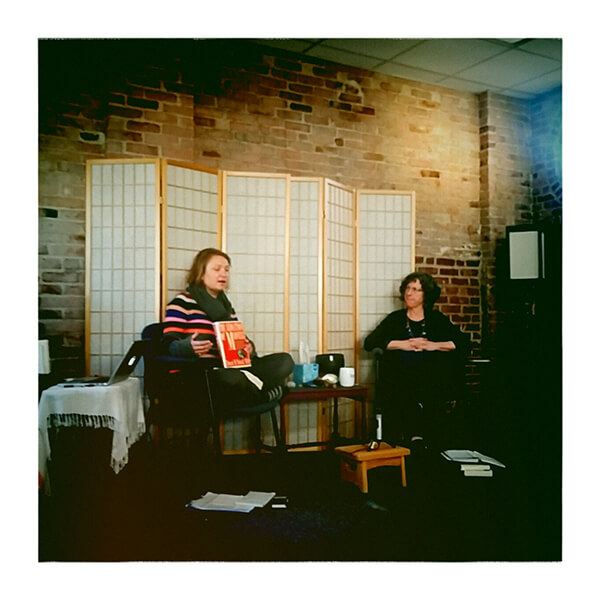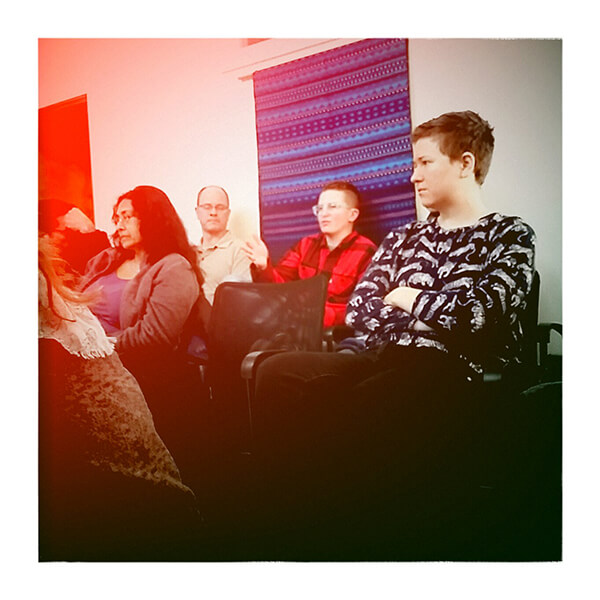Recovering Sanity Session 1: His Earlier Works
Over the course of the next few months, Windhorse Northampton will be having discussions about Podvoll’s Recovering Sanity which is a principle book towards the Windhorse approach to recovery. The discussion is lectured by staff members and open to the wider Windhorse community. This first post was lectured by Mary Tibbetts and Phoebe Walker. The following is an edited (for ease of reading) transcript of both the lecture and talk back. When listening to the discussion we thought it best to break the discussion into two themes highlighted in the talk; the differences and evolution between two of Podvoll’s books and thinking beyond the medical model. We hope that these series of talks further highlight our history and approach to recovery.
 Phoebe: The Seduction of Madness was printed in 1990. Then the new edition, Recovering Sanity, came out in 2003. Originally the book itself was based on a course that was offered at Naropa Institute, in the contemplative psychology program. In a way, the book was an offering of allowing other people to do that course of study without being at Naropa.
Phoebe: The Seduction of Madness was printed in 1990. Then the new edition, Recovering Sanity, came out in 2003. Originally the book itself was based on a course that was offered at Naropa Institute, in the contemplative psychology program. In a way, the book was an offering of allowing other people to do that course of study without being at Naropa.
Every time I come to the book there’s some other layer that arises, so it always feels new to me even though we’ve been over it a few times.
There are few metaphors people use to describe the book. Somebody once described that the book is kind of like a telescope. It starts from this kind of broad view of Perceval’s journey and sort of zeroes in to sort of the micro operations of the brain. And then it expands out again in the second section with the description of the Windhorse Project and recovery.
One way I was thinking about it was like a lighthouse. Somebody gave me this image, which I like better than a telescope because with a lighthouse, you walk up and up and it gets narrower and narrower. You get sort of a more fine-tuned perspective as you go up, but you also get up there and there’s this perspective that almost comes from every step of the journey. It gets smaller and smaller and smaller and smaller, narrowing into something there. So there’s a certain perspective at the top of the lighthouse, and then coming back down again. That is true of the reader’s journey through the book as well.
I was also thinking that there’s something about coming to teach the course that sort of brings you narrower up into that point of the lighthouse that relates to getting more and more intimate with the material.
We teach this course every few years, and it’s been two years now since we finished the psychotherapy course. So this group is sort of narrowing up towards that lighthouse peak, and that it would be good for them and part of their learning to offer the book class back to the community. There are five folks who went through the training who will teach the class. Jeremy will start next week with Perceval, the first chapter. Then Kat with Constance and Gary is going to do Crowhurst and Lindsay, Michaux. Along with Cynthia’s presentation. These are these parables that begin the book.
Each of them is doing that individually, almost like a representation of these people’s individual stories. Then the second part of the book, instructors will be pairing with one another, as the second part is more of a together journey than a solo journey of being in the madness. Each of them has the liberty to create the way they offer the education time. They’ll be the creators of that.Before that, we thought that Mary and I would start with some dialogue between the two of us for a little bit of time to get us going into the introduction of the book.
Mary: Phoebe and I had a couple of dialogues leading to up to our presentation today. She made the remark to me that she felt like the second edition,, which is the book that we all have read and are using, actually has a different flavor to it than the first book. The first book was sort of the birthing of presenting the Windhorse Project, and there was a lot of excitement that went into its being birthed. And you have a really particular take on what happened from the first edition to the second edition.?
Phoebe: Yeah, which is my theory–they’re just so different. Starting with the title and the cover. Just look at them. So they’re different from the outside, and then on the inside they’re different, too. There’s things that were a part of the first edition that got left out in the second. One being the dedication, and the other being the acknowledgements.
Mary: Right.
Phoebe: The first edition has a dedication at the start of the book, which is about not giving up on anyone. And that was missing in the second edition.
Mary: So there’s no dedication, which changes what you encounter when you first open the book.
Phoebe: Right. Then the other thing is the acknowledgements are not included in the second edition. The first edition explains that this book was written with the intent of giving the reader an experience of those in the course at Naropa. And that it was written with the intention to provide the reader with a sense of a personal relationship with insanity — and also the inspiration, knowledge, and courage to be of service. That’s totally left out of the second book, and that feels somehow really important to me: that the purpose of the book is to give people a personal relationship with insanity; to provide a sense of it and also the inspiration, knowledge, and courage to be of service.
Mary: And then we get to the title.
Phoebe: Right. Then even in the titles of the two books are very different.
Mary: Right.
Phoebe: Which I think there is something revolutionary about what Ed is pointing to in this first edition.
Mary: Read the first edition’s title, Phoebe.
Phoebe: The Seduction of Madness: Revolutionary Insights Into the World of Psychosis and a Compassionate Approach to Recovery at Home. So there is recovery in the subtitle, but the emphasis is different: it leads with “insights into the world of psychosis,” and then follows with “a compassionate approach” and “recovery at home.” Those three qualities of “understanding, compassion, and recovery at home or in the community” represent so much of the Windhorse approach. And the second edition’s title, which is Recovering Sanity: A Compassionate Approach to Understanding and Treating Psychosis, doesn’t emphasize these qualities in the same way.
Phoebe: Yeah. Then it occurred to me that when we give people the book these days, the new edition, Recovering Sanity, we often tell them to start with the second part of the book. And doing that, in a way, is sort of a . . . you know, the whole introduction of the book is about the takeover of the medicalized model. In a way, this second edition is sort of a medicalized version of the first one. And that somehow we’re missing the very thing that was so revolutionary about the first edition, which is the view of understanding and compassion. It’s like when we suggest people start with the second part of the book, we’re jumping to the fix again.
There’s something revolutionary that Ed and the people who were working with him at that time were suggesting. So not just Ed; it’s also Jeff Fortuna’s mind and Molly’s mind and Paul Cashman’s mind, these people who were coming together to do the work were suggesting that there’s something really, really important about creating this personal sense of one’s own insanity. It’s like you can’t really get to the second part of the book without first experiencing part one.
Mary: Right.
Phoebe: Yet that’s, we’re kind of jumping to part two ourselves to sort of make it more palatable. And that’s similar to what they did with the second edition..
Mary: Yeah.
Mary: And we apologize a little bit when we give people the book. We say, “Well the first part’s a little dense.” You know?
Phoebe: Right.
Mary: I confess some aversion every time it comes time to try to penetrate the first part of the book. It’s very intimidating in some way to have to make your way into this sort of forest where you have very little perspective. In fact, you just give up your perspective and get up close and intimate with madness. And as an aside, madness is a word that Ed uses a lot, which I have mixed feelings about. He uses madness and insanity pretty much. He doesn’t say extreme states. He doesn’t use any of the terms that we currently use, like people seeking services. He just calls it madness or insanity.
One thing that I’m curious about, do you remember the first time you encountered that material that you read… and how you responded?
Phoebe: Yeah. I remember I actually really got into the parables. Mary: It magnetized you in some way.
Phoebe: Yeah.
Mary: The stated purpose is to have an experience of madness or insanity. Was there any particular one that you identified with or that you felt if you were going to become insane you would go down that road?
Phoebe: Actually, no. Because I felt like the absence of a woman in the parables always struck me. There’s bits and pieces of it, but as a whole, not one that really felt like it resonated with my experience of insanity, which I think has something more to do with a depressive side. Not so …
Mary: Not so big.
Phoebe: Not so wild and big.
Mary: Whether or not there’s someone that you identify with, it’s that encounter with yourself and with your own human ability to experience anything that another human being can experience that’s hard to look at. Well it’s hard for me to look at.

